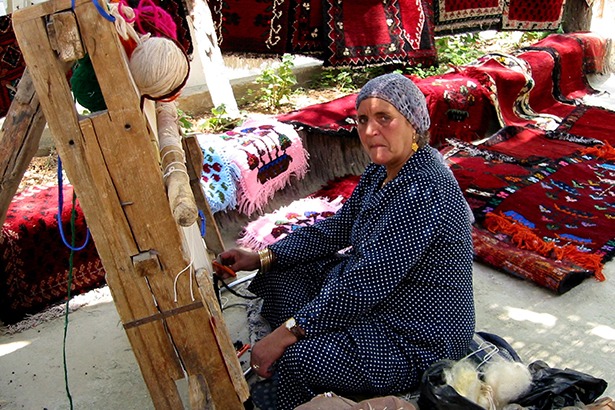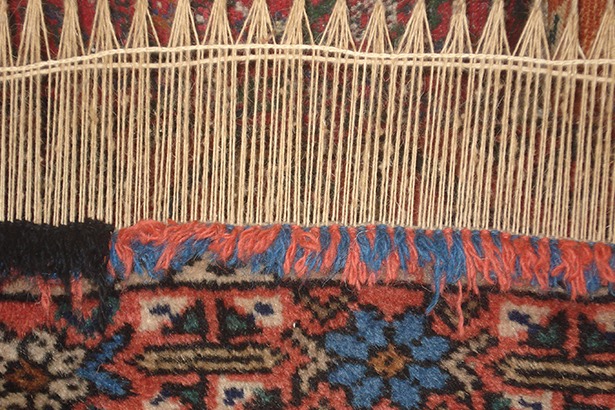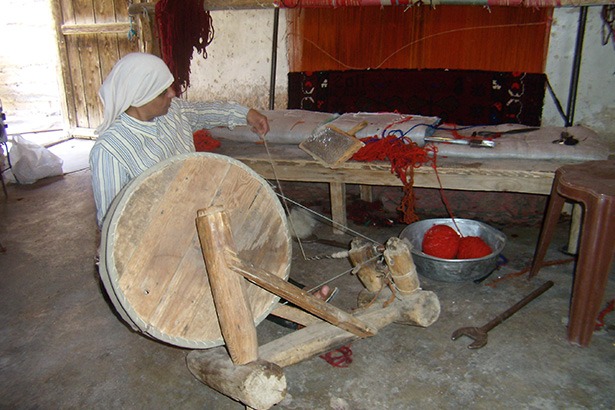In the remote villages of Jdeydet el Fekha and Aarsal, in Lebanon’s Bekaa valley, the carpet weaving tradition is kept alive by the women of the village. In their homes, with their kids running around, the women are hard at work to create a beautiful and unique piece for all to appreciate. And, it’s not an easy job.

Previously just used to cover bad flooring and to give cover on cold winter nights, carpets have now gained a more luxurious and artistic aspect. Whether laid on a floor or hung on walls, hand woven carpets are now considered an exclusive item that owners are proud to put on display.
The first step is to prepare the wool. It has been cut from sheep, washed, dried in the sun, combed, spun to transform it into threads, and then dyed with natural colors. Later comes the weaving process, which begins by preparing a loom, making knots, compacting them, cutting the edge to make them even and then working on the design.

Most of the carpets have been made following the Bergama Style. Bergama is a town northwest of Turkey and Bergama carpets are pure wool and have a knotting density of around 12 knots per cm². They are typically three to four m2 in size. Bergama rugs traditionally have dyed wefts, usually red, and long silky pile.
Wefts are horizontal plain colored thread, which run across the width of the rug, over and under the wrap strings and between each row of knots, to help hold rows of knots in place and strengthen the structure. Different colors are used in knotting in accordance with the pattern. The Turkish knot is looped around two different wraps, both ends are pulled down and cut. As for the designs, they are passed down from generation to generation.

If you are visiting the town of Baalbek, make a stop at the villages of Jdeydet el Fekha and Aarsal to learn about rug making. Purchasing a unique hand woven rug from the village women will support the traditions of the local community, well worth the 42 km detour.
- Contact: Nahla Succari c/o Baraa +961 70 831 269
Article edited on November 10, 2021
Loading
